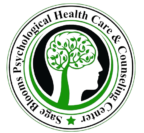Speech Therapy: Breaking Down Barriers to Effective Communication
Speech therapy is a valuable resource for individuals who face challenges in speaking and communicating effectively. It aims to improve pronunciation, strengthen speech muscles, and foster correct speech patterns. This therapeutic approach is applicable to a wide range of speech problems and disorders, ranging from minor issues like hoarseness to more severe cases involving partial loss of speech due to brain damage. In some instances, additional medical or psychological treatments may complement speech therapy.
Distinguishing between Speech Disorders and Language Disorders
Understanding the distinction between speech disorders and language disorders is crucial. Language disorders pertain to difficulties in comprehending what others say (receptive language) or expressing thoughts (expressive language). Developmental language disorder (DLD) is an example of a language disorder that delays the acquisition of language skills. Some children with DLD may not start speaking until their third or fourth year. On the other hand, speech disorders involve challenges in producing speech sounds accurately, hesitations, or stuttering during speech. Apraxia of speech is a specific speech disorder that makes it challenging to organize sounds and syllables in the correct order to form words.
The Role of Voice, Speech, and Language in Communication
Voice, speech, and language serve as the fundamental tools we employ to communicate with one another. Voice refers to the sound produced when air from our lungs passes through the vocal folds in our larynx, leading them to vibrate. Speech, on the other hand, encompasses the act of talking and expressing language. It involves the precise coordination of various muscle actions in the tongue, lips, jaw, and vocal tract to generate recognizable sounds that constitute language. Language, meanwhile, consists of a set of shared rules that enable individuals to express their ideas in a meaningful manner. Language can be conveyed verbally or through writing, signing, or other gestures such as eye blinking or mouth movements.
Speech Therapy: Addressing a Range of Disorders
Speech therapy is a versatile approach that can effectively treat various disorders, including:
- Language disorders
- Speech disorders
- Voice disorders (dysphonia)
- Trouble swallowing
By targeting these disorders, speech therapy aims to enhance communication skills, promote clarity in speech, and alleviate any associated difficulties or discomfort. Through targeted interventions and personalized treatment plans, individuals can overcome barriers to effective communication and improve their quality of life.
